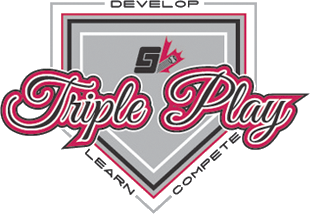Application Process
Choosing a school can be an overwhelming process, but once you narrow down the list, you need to know the entrance requirements. Even if you’re a fantastic softball player, most schools won’t accept you if you don’t have the required grades.
For Canadian colleges and universities, entrance requirements are easily found on a school’s website, generally under the “Admissions” page. Each school has its own entrance requirements. Even if you are being recruited by a school, you typically need to apply for admission on your own and get accepted before you can be offered a spot on the team.
Canadian universities typically don’t have to resources to offer athletic scholarships, much less “full rides” covering tuition, textbooks, room, and board. However, there are numerous opportunities for financial assistance. Bursaries may be available, and many schools offer scholarship programs for students with high school averages over 80%. Additionally, there are also many forms of financial aid available, such as provincial loans. While applying for these bursaries, loans, and scholarships may require some additional effort such as reference letters and essays, the reward is well worth it.
With American schools, the admissions process is a bit trickier when applying from a Canadian high school. Both of the major leagues, the National Association of Intercollegiate Athletics (NAIA) and the National Collegiate Athletic Association (NCAA), have “Eligibility Centers” that require prospective student athletes to register before receiving scholarships or competing. Generally, the requirements are a certain grade point average (GPA) and score on a general aptitude test like the SAT (Scholastic Assessment Test) or the ACT (American College Test).
The NAIA (which the University of British Columbia is a part of, along with over 200 American schools) has anEligibility Centre and three general guidelines for eligibility: An overall high school GPA of 2.0 or above on a 4.0 scale (a C average), graduating in the top half of your high school class, and/or achieving at least an 18 on the ACT or an 860 on the SAT.
If you want to be an NCAA student athlete, you need to register with the NCAA Eligibility Centre either at the end of your 11th grade year, or toward the beginning of your 12th grade year. There is no deadline for registration, but prospective student athletes must register before receiving an athletic scholarship or competing at an NCAA Division I or Division II institution. The Eligibility Centre, formerly known as the NCAA Clearinghouse, determines your academic eligibility for NCAA schools (there is one Canadian school in the NCAA, Simon Fraser University). The Eligibility Centre also determines amateur eligibility, as “professionals” are not allowed to compete in any of their three divisions. NCAA amateurism rules specify that an athlete cannot have been paid for athletic participation in the form of money or other goods before they start competing in the NCAA.
The NCAA requires prospective student athletes to take a specified number of “core courses” in high school, earn a certain GPA in those core courses, and achieve a certain grade on either the ACT or the SAT. For more information on NCAA academic guidelines and requirements, see The College Board’s Guide for Student Athletes.
American schools do have the resources to hand out full athletics scholarships, but that doesn’t mean that getting one is easy. Only two percent of all high school athletes receive a “full ride” to attend school. In NCAA Division I softball, coaches get the equivalent of 12 full scholarships to give student athletes. This means that they could give out 12 “full rides”, but they’re more likely to give out 20 or so partial scholarships that may cover tuition, but not room and board.
More Resources:
http://www.collegesportsscholarships.com/softball.htm
http://students.sfu.ca/ncaa/prospectivestudentathletes.html
http://www.scholarshipscanada.com/
http://www.studentawards.com/
FUN FACT: Did you know Softball Canada was established in 1965? Prior to that the sport was divided into regional groups.


















